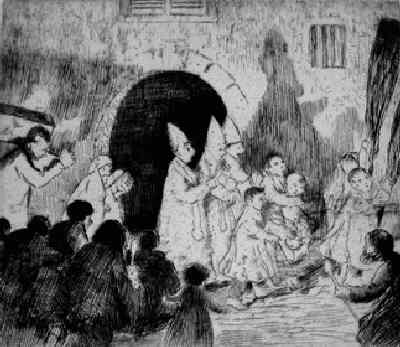
Figure 1.--This undated etching of a Gutmann print shows a European religious procession. Note the priests and altar boys.


Figure 1.--This undated etching of a Gutmann print shows a European religious procession. Note the priests and altar boys. |
Bernhard Gutmann created beautiful paintings using the palette of an Impressionist, brilliant colors laid down in the bold and broad brush strokes of the Post-Impressionists. Some of his works include children in depictions of everyday life.
Bernhard Gutmann was born in Germany during 1869 and arrived in New York City at the age of 23. Within a few years he would work his way up to Superintendent of Drawing in Public Schools, marry a wealthy heiress, open a studio in Paris, show his own works throughout the world and become Regional Director for The Public Works of Art Project. However, it isnít until a renewed interest in his work in the 1980ís that he was referred to as "the American Gauguin".
Gutmann creates beautiful paintings using the palette of an Impressionist, brilliant colours laid down in the bold and broad brush strokes of the Post-Impressionists. He was also known to have a bit of a dark side that he expressed in his later works in morbid subject matter including skeletons and imagery of death. Gutmann worked with oil on canvas, oil on wood panels, pencil on paper, gouache and prints.
Bernhard Gutmann was known to have a melancholy and almost depressed side to his usually jolly disposition. This darker side was expressed in some of his work, typically the work done later in his life.
His work is of interest to HBC because it often depicted everyday life and children are often included. This etching depicts a funeral precession led by altar boys, followed by three priests, a pair of nuns and the pallbearers bearing the weight of the full casket. The mourners kneel facing the precession with their backs to us, holding
candles. It is from the candlelight that the scene gets it eerie lighting, casting long shadows on the stone walls. The nature of dress, behaviour and setting of the work suggests the scene takes place in a European village, perhaps even during medieval times.
This information was offered by Lauren Michaels Fine Art which was selling the etching in 2001.
Navigate the Boys' Historical Clothing Web Site:
[Return to the Main individual artists A-L page]
[Return to the Main individual artists page]
[Introduction]
[Activities]
[Bibliographies]
[Biographies]
[Chronology]
[Clothing styles]
[Contributions]
[Countries]
[Boys' Clothing Home]
